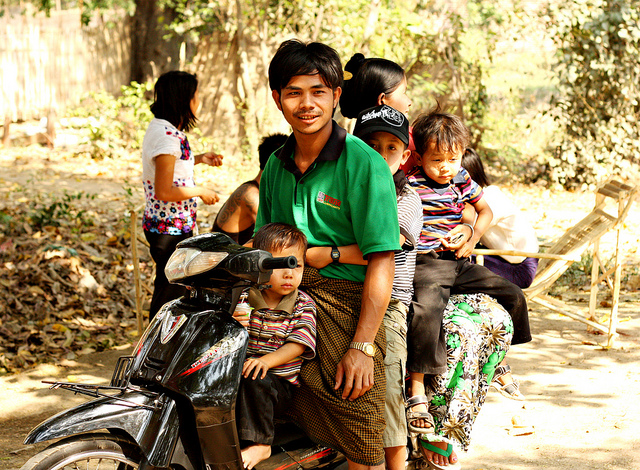Motor vehicle traffic: The top killer of youth in developing countries
By Caroline O'Donovan

Motor vehicle traffic: The top killer of youth in developing countries
By Caroline O'Donovan
Here’s a shocking fact: Automobile traffic kills more young people developing countries than HIV/AIDs or malaria. Here’s another shocking fact: We know how to stop it — but we haven’t.
Kevin Watkins of the Brookings Institute has spent years travelling through developing trying to figure out why traffic deaths aren’t more of a public concern. We spend billions preventing killer diseases; but of the $20 billion dollars spent on road construction every year, less than 1 percent is spent on simple road safety precautions.
Consider a six-lane highway that runs through a village in Nairobi, Kenya. The highway separates students from their school, and Watkins says these kids must cross the highway on foot every day. The World Bank, the organization that funds the highway, never bothered to construct an overpass — a simple improvement that would cost between $10,000 and $20,000.
“It’s not like you need billions of dollars to research a new vaccine,” said Saul Billingsley, Deputy Dir. General of the Global Traffic Safety Campaign. “We know what works in terms of reducing casualties. The problem is that it’s not being done right.”
Cheap, life-saving improvements like curbs, street markings and medians are especially important in urban environments where there are more pedestrians, according to Watkins. In the United States, only 15 percent of road traffic related deaths occur in pedestrians. In Ethiopia, 70 percent of those killed by motor vehicles are travelling by foot. An injury one might survive in Chicago may be fatal in a city like Mumbai, where there is “essentially no functioning health care system,” Watkins says.
Three forces could combine to staunch such deaths: First, the governments of these countries need to raise awareness about what we in the United States consider basic safety issues — things like drunk driving, seat belts and helmets. Second, governments need to strengthen regulations; Watkins points to Scandinavia, where drunk driving can get you immediate imprisonment, as a good example.
Finally, banks and nations that give money to build infrastructure need to take responsibility for including necessary safety features. Saul Billingsley of the Global Traffic Safety Campaign says, “The World Bank … uses money from western donors to build roads in Africa, Asia and South American that are substandard in terms of safety, just because a small amount of money isn’t being spent.“
One place where these strategies come together, according to Watkins, is Rwanda. The country has high investment in safer road design and enforces their speed policies; compared to neighboring Uganda, Rwanda has much lower fatality levels.
Another example that inspires optimism is Vietnam. Greig Craft founded Asia Injury Prevention in Hanoi in 1999 to address the growing problem of traffic fatalities, specifically for riders of motorbikes. “It’s not unusual to see a mom, a dad and two kids hanging on for dear life to a motorbike,” Craft says. “In the developing world, the motorbike is the family car.” Industrialization also plays into this dynamic. Craft describes a pattern in which, a factory goes up, people get jobs, they buy a color TV, and then they buy a motorbike. That means the number of bikes and riders on the road is increasing rapidly, which means more accidents. Craft calls this “the dark side of globalization.”
Until 2007, Vietnam had no laws requiring riders to wear helmets. Once Craft’s organization got the law in place, the number of riders wearing helmets more than doubled. Fatalities dropped dramatically. His organization focuses not only on providing physical helmets to people, but on making sure there are standards of safety. When helmet laws were instituted in Nigeria, Craft said, people were often seen wearing watermelons and plastic bowls on their heads to avoid fees. Like Watkins, he cites public awareness as a major part of his five pillar strategy for reducing road traffic deaths. The Injury Prevention Foundation is now working in Cambodia, Thailand, and China as well as east African countries like Uganda and Tanzania.
Craft’s success is a relatively lone bright spot. Only a handful of countries have published comprehensive ten year plans for how they intend to combat growing numbers of motor vehicle fatalities. Even if they do, public awareness and regulation campaigns can only do so much to combat the driving social and economic forces of these countries. “The…fundamental issue is whether these roads are the right response to mobility needs,” said Billingsley, “We build roads too fast to try to move goods for trade without thinking about social needs of the people.”
